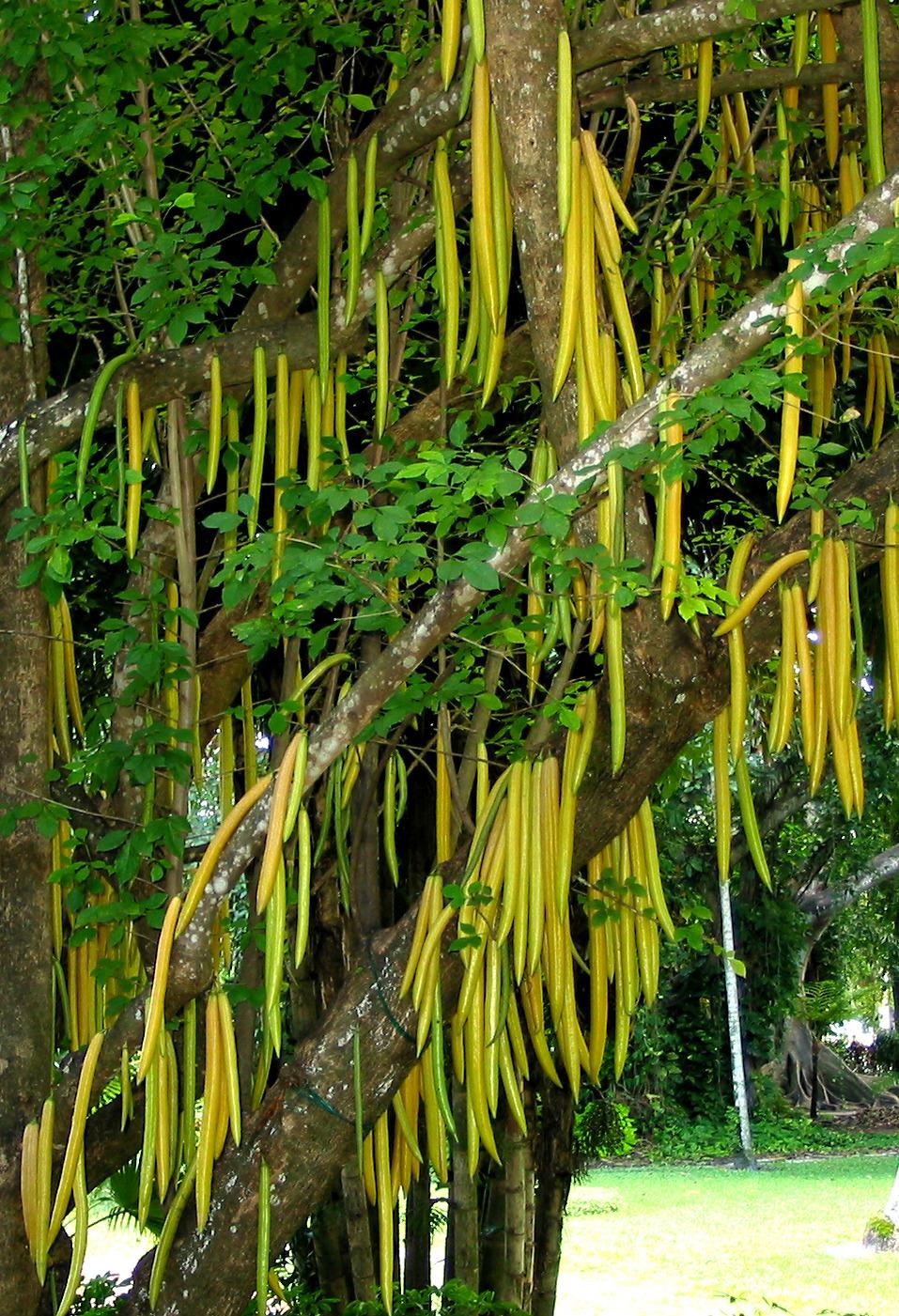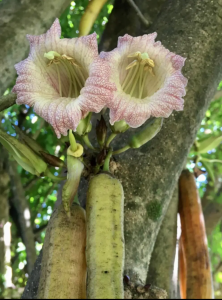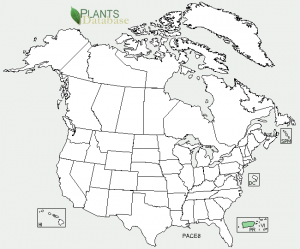
The Candlestick fruit is edible, most often it is pickled or eaten raw.
If you are meandering through a botanical garden in a warm climate and you see a tree growing four-foot-long candles it might be Parmentiera cereifera. Endemic to Panama it’s a favorite specimen for them to grow because of the unusual fruit and is called Palo de Velas or Arbol de vela.

The blossoms and fruit can grow on the trunk. Photo by Susan Rushton
The species is cultivated for the edible fruit as is P. aculeata. There is a Candlestick Tree at Marie Selby Botanical Gardens in Sarasota, the Fairchild Tropical Botanical Gardens in Coral Gables, The Fruit and Spice Park Redland, the Flamingo Gardens in Davie, FL and the Mounts Botanical Garden in West Palm Beach. The fruit is as resistant as a carrot but tastes like tomato and okra some say bell peppers and sugarcane. The seeds are edible as well.
The genus honors the French agronomist and pharmacist Antoine Augustin Parmentier (1737-1813) whose claim to botanical fame was to promote the potato in France. At the time the French called it “hog feed” and believed it caused leprosy thus it was officially banned. Parmentier’s efforts got the ban lifted. Cereifera means wax producing.
Green Deane’s Itemized Plant Profile

Also found Puerto Rico and south Florida.
IDENTIFICATION: A rough-bark tree to 25 feet, opposite ovate leaves of three leaflets. White blossoms, fruit from one to four feet long, green turning yellow, resembles a candle. The fruit can grow directly from the trunk. It’s in the Bignoniaceae family which has about 104 genera and 860 species. Preliminary phytochemical investigation suggested the presence of flavonoids, saponins, tannins, triterpenoids and steroids.
TIME OF YEAR: Mid-winter in Florida.
ENVIRONMENT: Adapts to different soil and climate condition. Can tolerate frosts.
METHOD OF PREPARATION: Edible raw or cooked when waxy yellow. It resembles sugarcane in texture. Can be pickled and preserved. Roots are diuretic.

